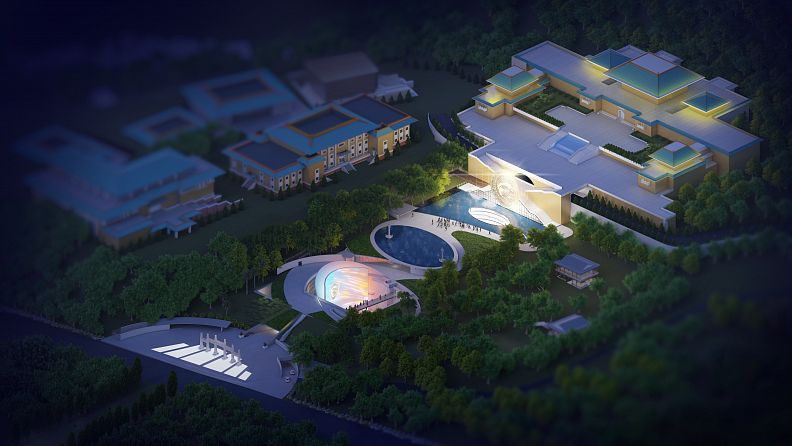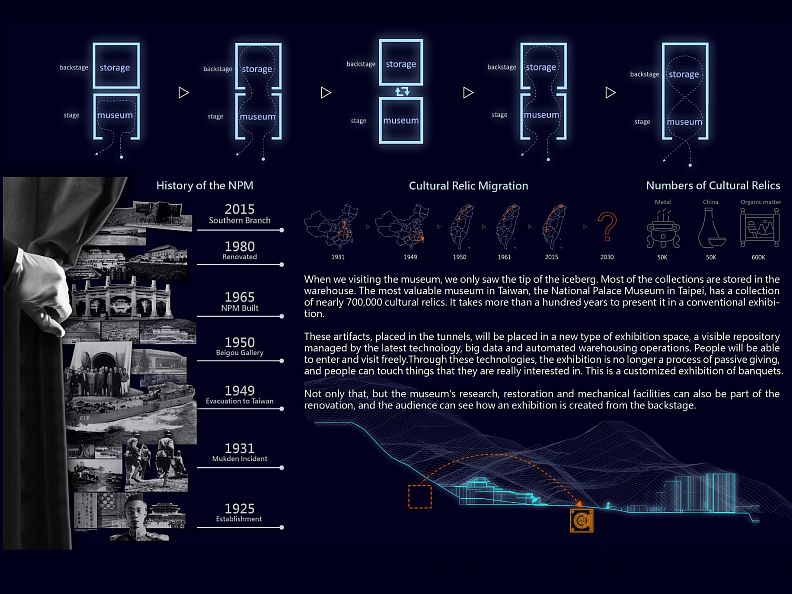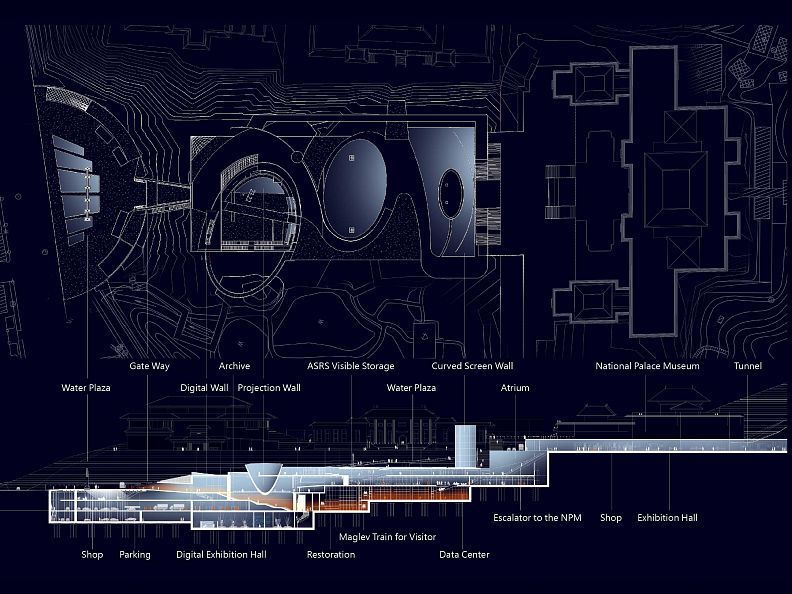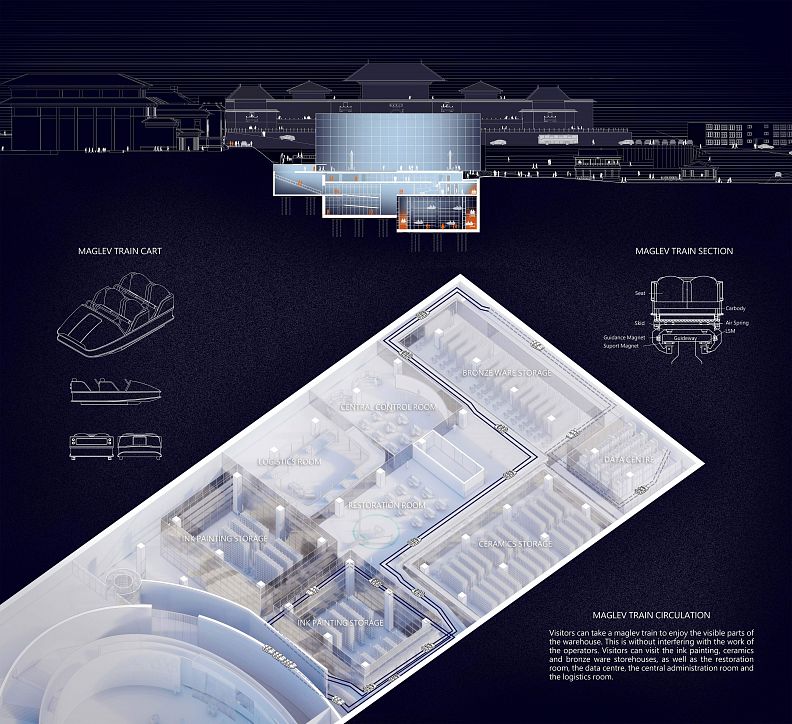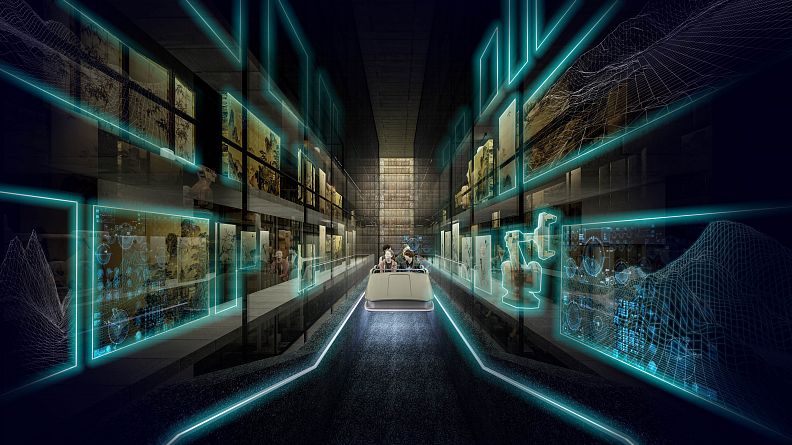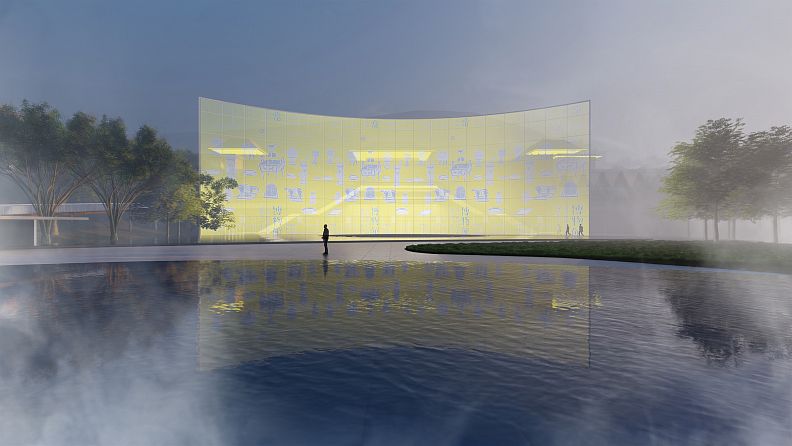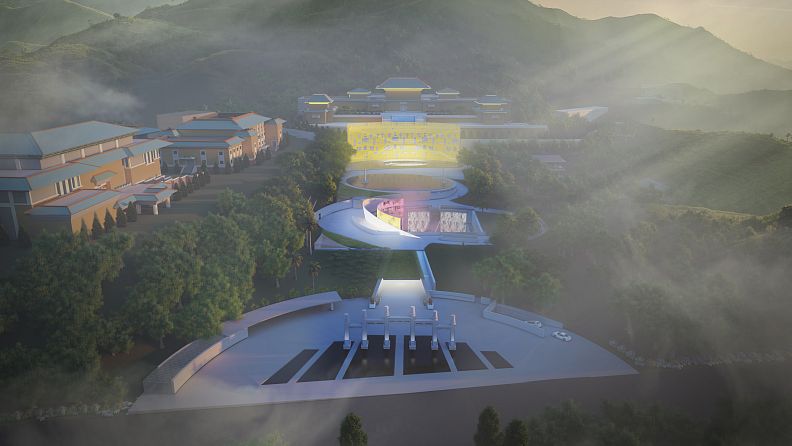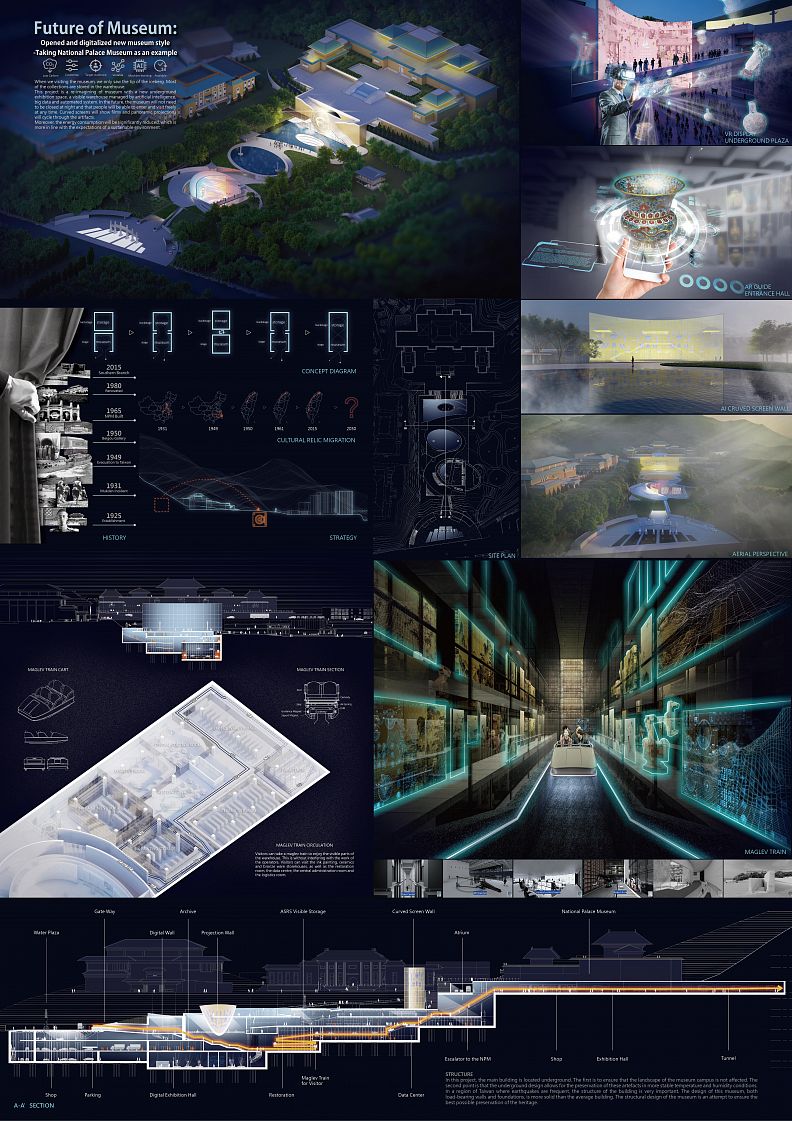Future of Museum: Opened and digitalized new museum style -Taking National Palace Museum as an example

Idea projektu
When we visiting the museum, we only saw the tip of the iceberg. Most of the collections are stored in the warehouse. The most valuable museum in Taiwan, the National Palace Museum in Taipei, has a collection of nearly 700,000 cultural relics. It takes more than a hundred years to present it in a conventional exhibition.
These artifacts, placed in the tunnels, will be placed in a new type of exhibition space, a visible repository managed by the latest technology, big data and automated warehousing operations. People will be able to enter and visit freely.Through these technologies, the exhibition is no longer a process of passive giving, and people can touch things that they are really interested in. This is a customized exhibition of banquets.
Not only that, but the museum's research, restoration and mechanical facilities can also be part of the renovation, and the audience can see how an exhibition is created from the backstage.
Popis projektu
This project is a re-imagining of the museum square with a new underground exhibition space, a visible warehouse managed by the latest technology, artificial intelligence, big data and automated storage operations. I believe that in the future the museum will not need to be closed at night and that people will be able to enter and visit freely at any time. Curved screens will show films without interruption and panoramic projections will cycle through the artifacts.
Technické informace
In this project, the main building is located underground. The first is to ensure that the landscape of the museum campus is not affected. The second point is that the underground design allows for the preservation of these artefacts in more stable temperature and humidity conditions. In a region of Taiwan where earthquakes are frequent, the structure of the building is very important. The design of this museum, both load-bearing walls and foundations, is more solid than the average building. The structural design of the museum is an attempt to ensure the best possible preservation of the heritage.
Visitors can take a maglev train to enjoy the visible parts of the warehouse. This is without interfering with the work of the officials. Visitors can visit the painting, ceramics and bronze ware storehouses, as well as the restoration room, the data centre, the central administration room and the logistics room.
